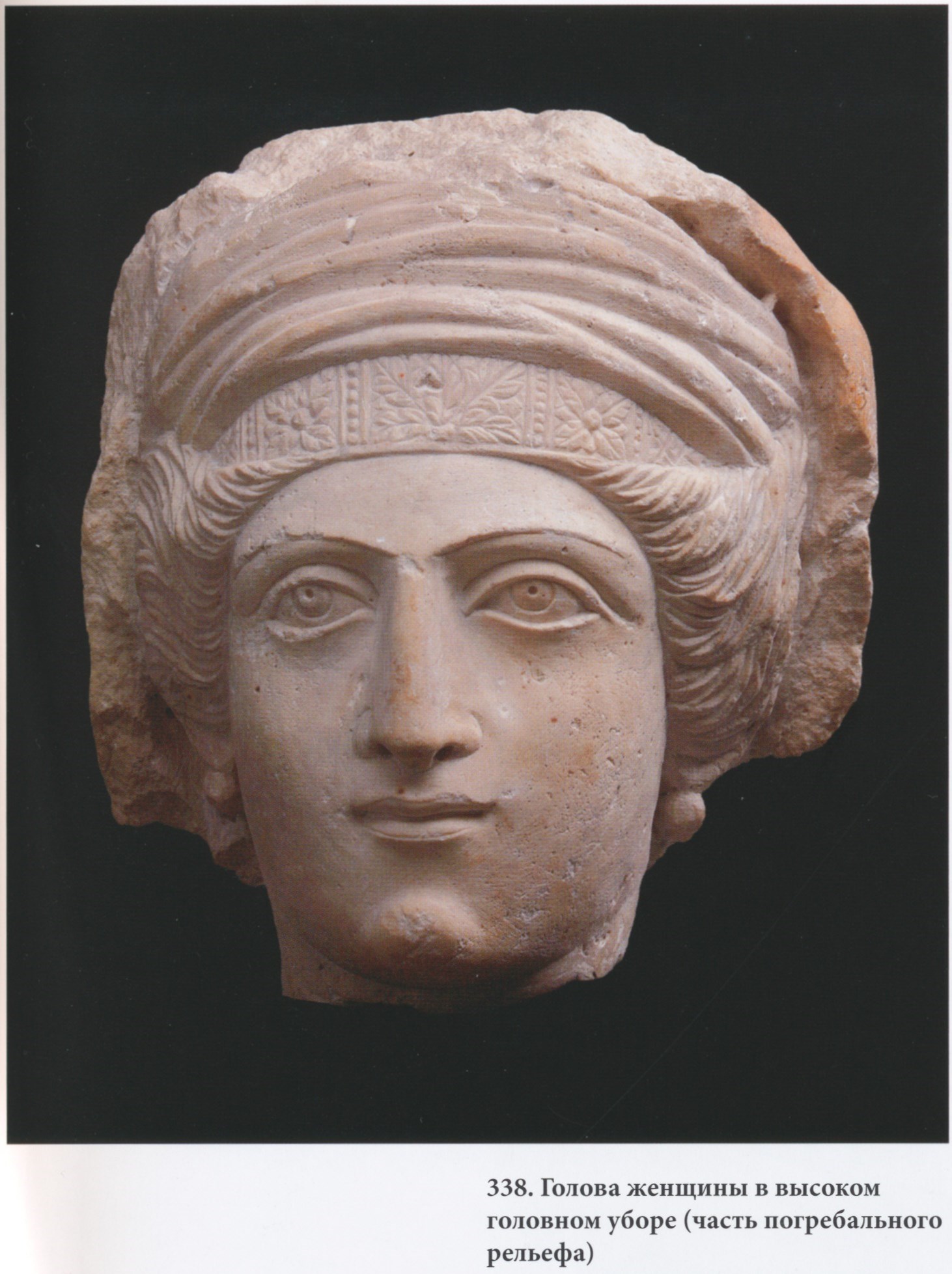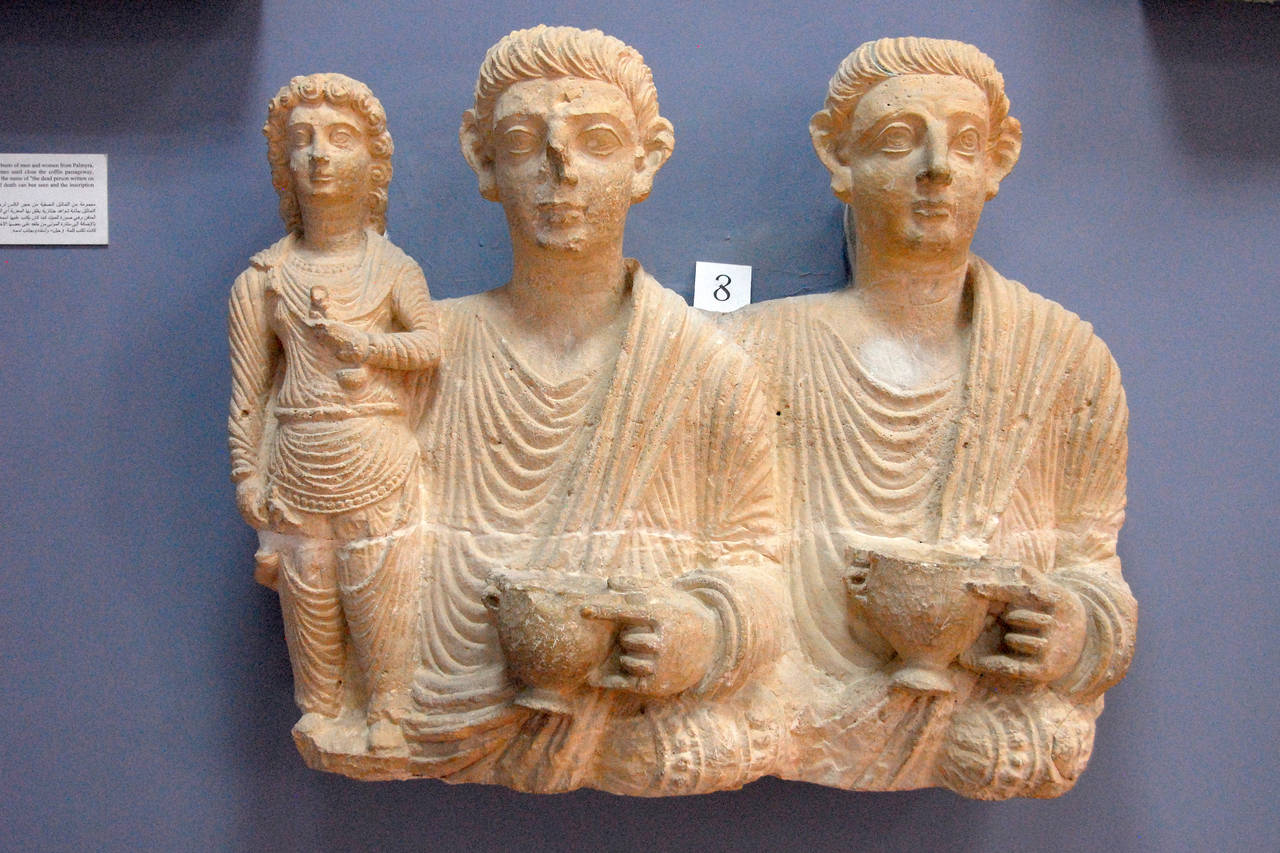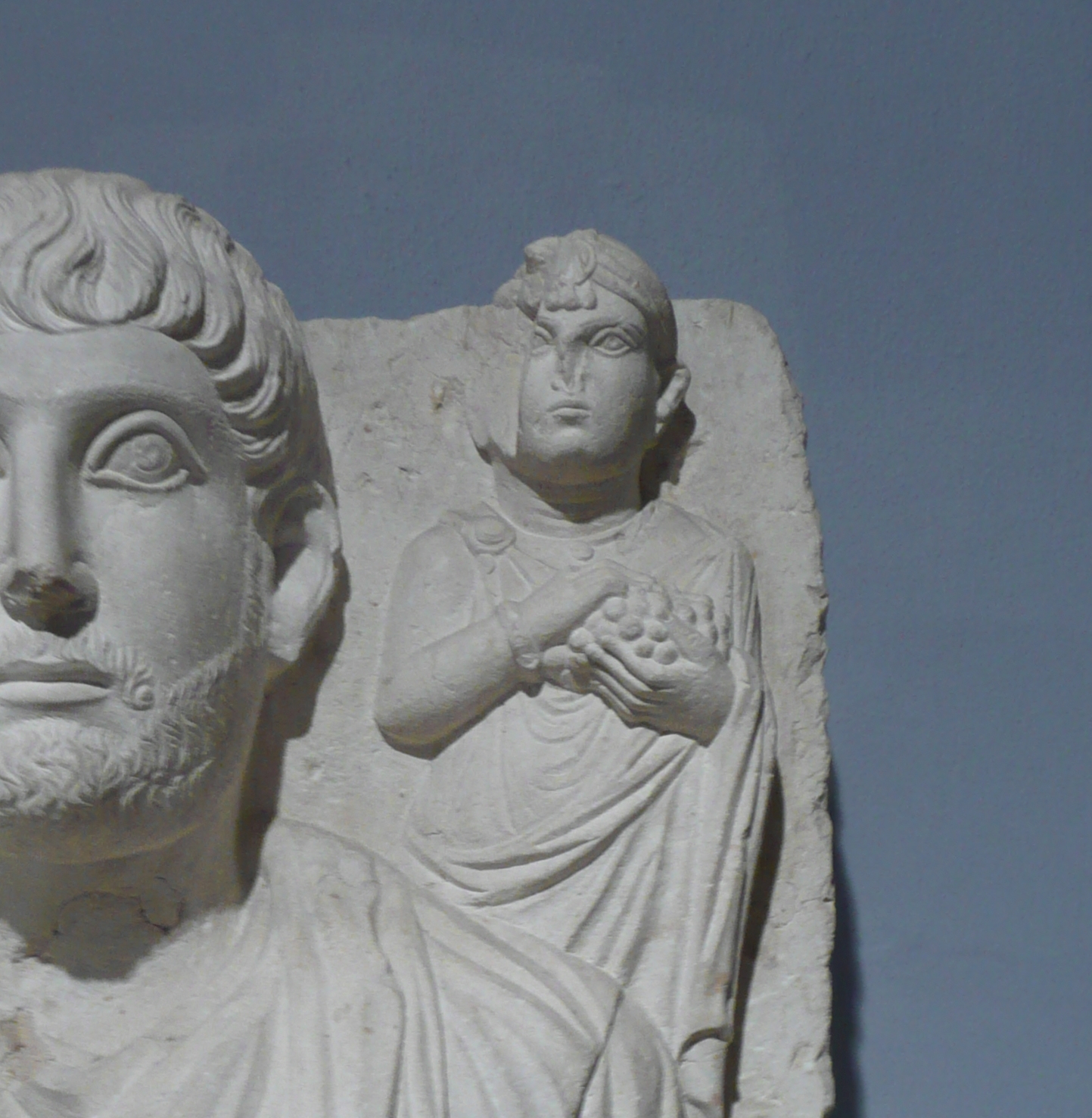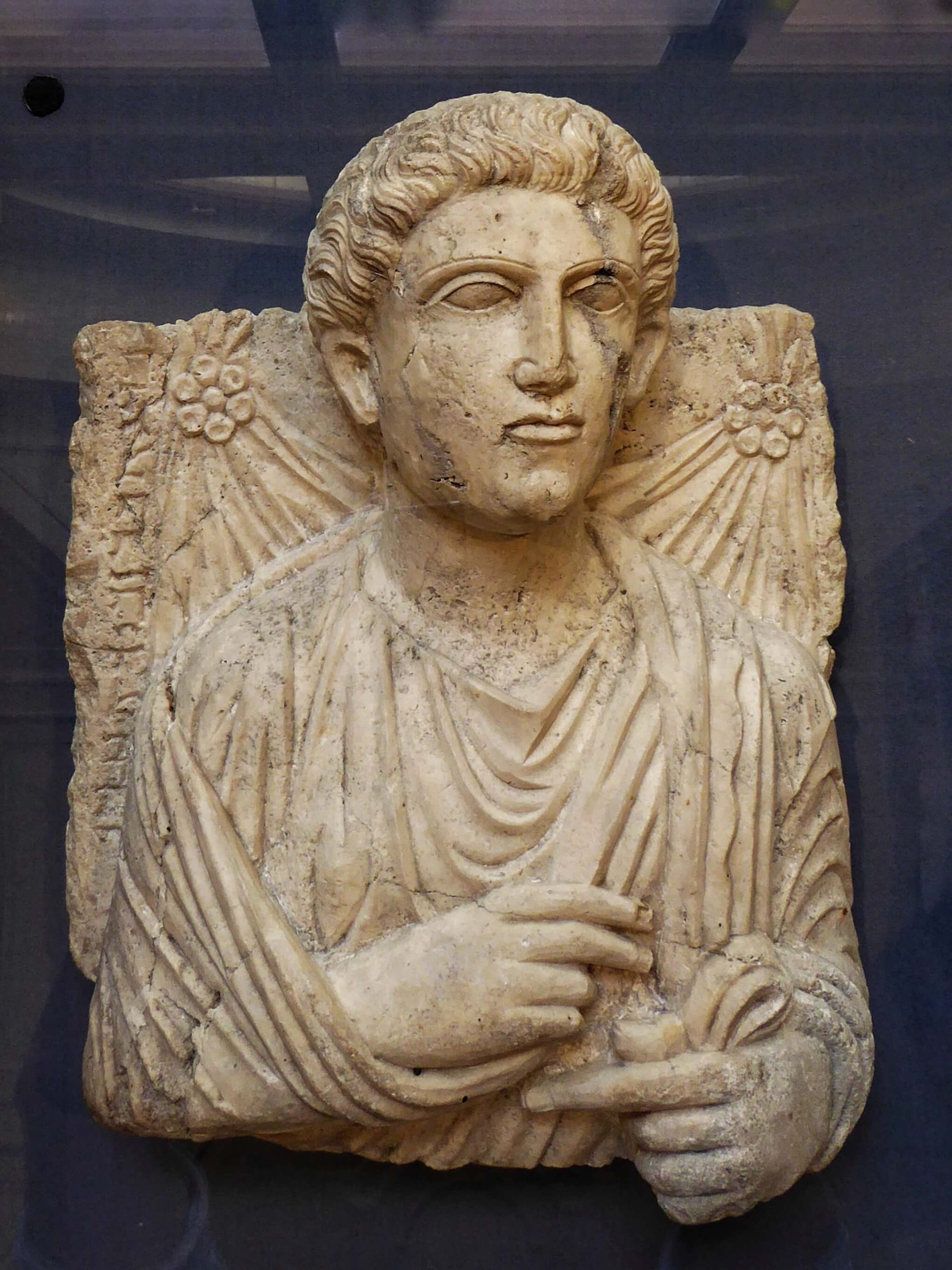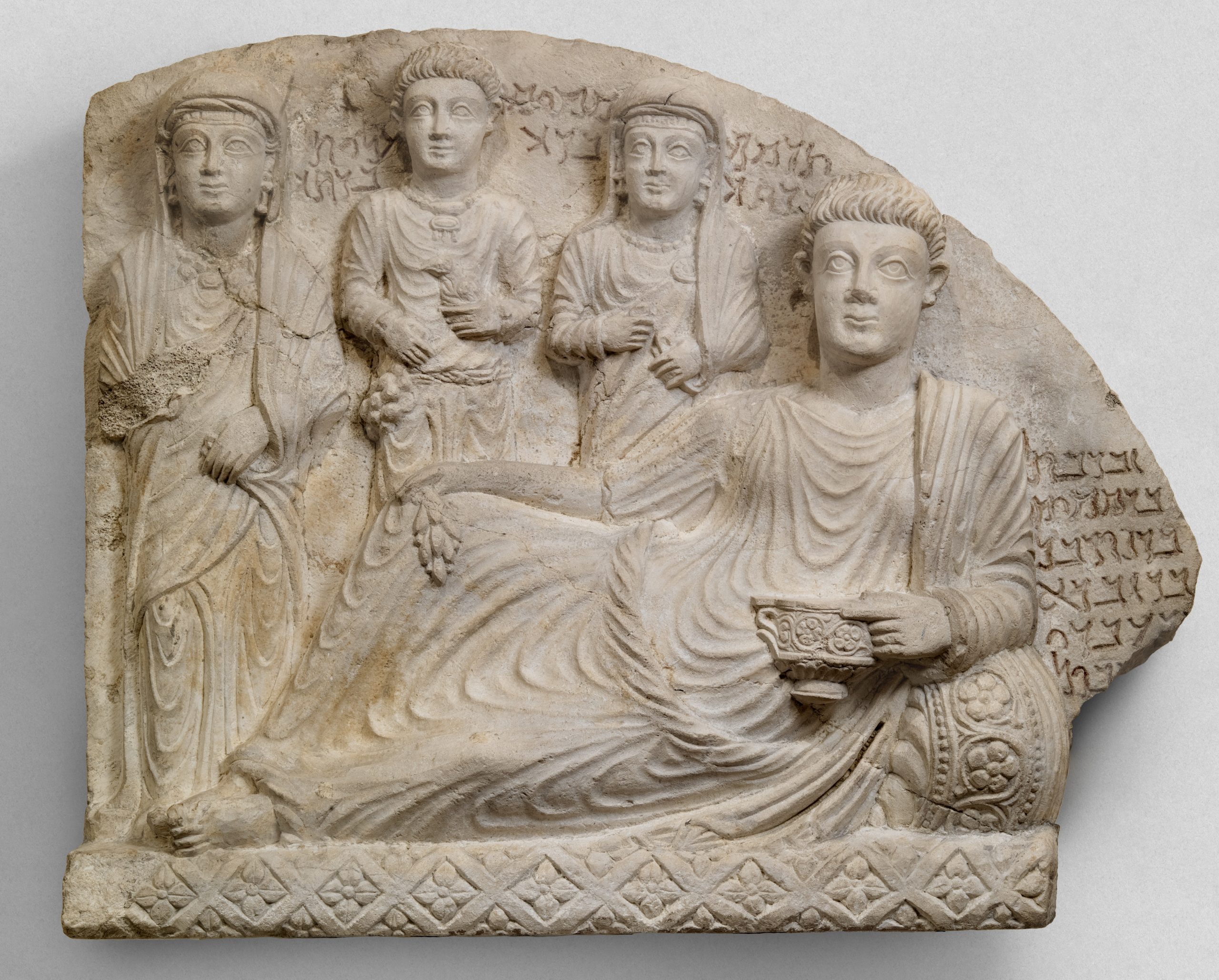
Alexander the Great. Way to the East.
Exhibition catalog. State Hermitage.
// SPb: Publishing house of the State. The Hermitage. 2007.512 p. ISBN 5-93572-235-6
339. Funeral relief of the legionnaire Khairan.
Syria, Palmyra. Second half of II – early III century AD
Limestone. 45 × 60 cm.
Received from RAIK in 1914.
Inv. No. in the Hermitage ДВ-8840
Bust of a middle-aged man with curly hair and a cropped beard. The man is dressed in a folded tunic attached to his right shoulder with a brooch. In his right hand he holds a stylus, in his left a writing tablet. On the sides of his head there is an inscription.
Literature: Wood 1753; Wood 1812; Bernoville 1868; Sallet 1866; Wriglit 1895; Abamelek-Lazarev 1885; Shifman 1965; Mikhalovsky 1968 .
A.B. Nikitin
Palmyrene Funerary Relief of Hairan
Created: Palmyra. 189 CE
Aramaic inscription: “Alas! Hairan, benificiary, the son of Borea bar-Hairan bar-Taibol. In the Tebetan month of the year 500. He and his father are buried in this grave“. Literature: П.К. Коковцов. К пальмирской археологии и эпиграфике. Пальмирские надгробные рельефы Русского Археологического Института в Константинополе. София, 1908, c.278, № 1.


Collection of the RAIK Museum in the Hermitage.
// Exhibition catalog. St. Petersburg: State Hermitage. 1994.248 s.
69. KHAYRAN’S FUNERAL RELIEF.
Date (in the inscription): “month Tebet 500” of the Seleucid era = January 189 AD.
Half-length image of a mature man with a short beard and mustache, dressed in a long-sleeved tunic and a fringed cloak (attached to his right shoulder with a round brooch); in his right hand, bent at the elbow and pressed to his chest, he holds the stylus- calamus with his thumb, forefinger and middle fingers (the little and ring fingers are bent); in the left hand – two narrow plates folded together (the so-called “writing tablet”); there is a ring on the little finger of the left hand.
The inscription (on the right, in six lines): “Alas! Hairan, / beneficiary, / son of Borea / bar-Hairan bar- / Taibola. In the month / You are 500 years old ” ; (on the left, in three lines): “He and his father / [were buried] in gumh / this.”
The term beneficiary is of Roman origin (in the inscription it is given without translation, in Palmyro-Aramaic transcription). In the Roman army, it designated legionaries who enjoyed privileges ( beneficia ) for special merits – they were freed from daily military duties, were appointed to honorary convoys, etc. Stylus- calamus in the hand of the beneficiary of Hairan, this relief has sometimes been interpreted as indicating that the Palmyran Hairan was a Roman legionary and served as a staff scribe. However, the stylus and “writing tablet” are frequent attributes of the burial reliefs of Palmyra, rather associated with the peculiarities of the funeral cult than with the earthly occupations of the deceased. The honorary title of the beneficiary also does not directly testify to Hairan’s service in the Roman army and, apparently, could have been received by him for some other, completely civilian service.
State of preservation: damaged face, hands, clothing; the back wall is upholstered.
Literature: Kokovtsov, 1908.S. 278-280. Tab. IX; Saverkina, 1971, p . 26 . Il. 28 , 29 .
Inv. No. 8840.




